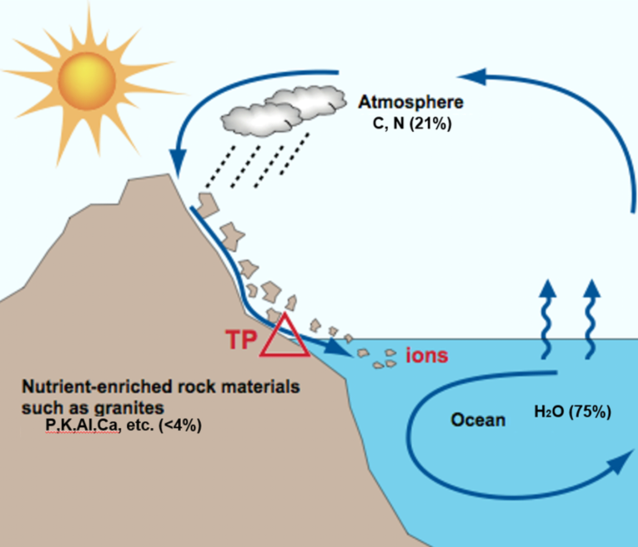ELSI Blog
9 Habitable Trinity
On behalf of the ELSI effort, we (Dohm and Maruyama) proposed a new concept that goes beyond follow-the-water paradigm in the search for life beyond Earth at the ELSI kickoff meeting held in March, 2013. The concept, newly named Habitable Trinity, has been presented at the Japan Geoscience Union (JPGU)-2013, International Symposium on Remote Sensing (ISRS)-2013, and the Asia Oceania Geosciences Society (AOGS)-2013 Meetings. We will also present our new concept at the European Planetary Science Congress-2013 and Geological Society of America (GSA)-2013 Meetings.
Habitable Trinity, which is a newly proposed concept of a habitable environment for searching for life beyond Earth, is the coexistence of an atmosphere (consisting largely of C and N), an ocean (H and O), and a landmass (supplier of nutrients). It is the minimum requirement for life as we know it.
A habitable planet has largely been defined as having an adequate climate, which includes a sufficient atmosphere [1,2], as well as the presence of liquid water on its surface [3].
The presence of an atmosphere (C and N), an ocean (H and O), and a landmass (nutrients) are minimum chemical-composition requirements for life. In addition, steady-state material circulation is necessary to bear life. On the surface of the Earth, the Sun drives a steady-state supply of energy circulated among the atmosphere, ocean, and landmass, which we call Habitable Trinity. The Habitable Trinity, a triple point for life through the interface among water, solids, and gas (Fig. 1), which can maintain organic radical reactions, is proposed as a new definition of a habitable environment.
Figure 1. Human beings are composed of the three components of Habitable Trinity: (1) water (ocean = 75%), (2) C and N (atmosphere = 21%), and nutrients (solid Earth <4%). Life including microorganisms, plants, and mammals, in general, are composed of these three components, although the ratios considerably vary among each type. Organic radical reactions are optimized through the interaction among the three components. For life to exist and flourish, a triple point among the atmosphere, ocean, and landmass (nutrient-enriched rocks such as granite) must exist. Energy/material circulation is driven by the Sun, including hydrological cycling, which includes chemical weathering, erosion, and transport of nutrient-enriched materials to the oceans (boulders to rocks to eventually ions ingestible for life).
The concept of Habitable Trinity, which is based on the geologic and biologic evolution of the Earth informed through [4,5], can be applied to any planet and satellite to optimize the search for life beyond Earth. As such, an index of parameters to optimally search for life on the planetary bodies of our solar system and exosolar planets must start with the three primary Habitable-Trinity components: landmass, atmosphere, and ocean. Mars, for example, is the best target in our solar system to investigate whether life exists beyond Earth, as it once had Habitable-Trinity conditions.
References
[1] Strughold, H., Aviat. Space Environ. Med. 24, 393-9, 469, 1953. [2] Huang, S.-S., Am. Sci. 47, 397-402, 1959. [3] Kasting, J.F., et al., Icarus 101, 108-128, 1993. [4] Maruyama, S., et al., Geoscience Frontiers 4, 141-165, 2013a. [5] Maruyama, S., et al., Gondwana Res., 2013b, in press.
Tokyo Institute of Technology
James Dohm
Earth-Life Science Institute (ELSI) Titech
2-12-1-I2-52 Ookayama, Meguro-ku, Tokyo
152-8551, Japan
email: jdohm@elsi.jp












